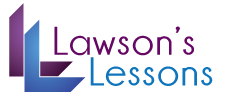Stand Up!!!
Speaker Stance
Objective: The students will be able to analyze a speaker’s stance and be able to choose the appropriate stance for their upcoming speeches.
Materials: Pictures of people standing. Serious and funny poses are encouraged.
Steps:
1. Choose 5-7 students (depending on how many stances you have chosen. Give each student a picture of a stance. Have them demonstrate the stance for the whole class.
2. After each the student demonstrates their stance, have the entire class practice it as well.
3. Ask the students what each particular stance projects. Is the tone or mood enhanced? Would you use it to highlight a point in your speech? What attitude does the stance portray?
4. Discuss with the class which stances would work best for an Informative, Persuasive, Entertainment, and other Special occasion speeches.
Note: Some stances will work for more than one speech. Some will work for none. Some students might point out that you can use more than one stance in a specific speech. This is very true.
Results: Pair students up with a partner and have them work on what stance would work best for their specific speeches.
Note: The students should have their speeches written already so as partners they should go through their entire speech and write down how they will stand at various points in their speech.
Tell Us How You Really Feel
Using Body Language to Enhance the Delivery of a Speech
Topic: Bodily Actions
Objective: Students will be able to use their body to effectively reinforce verbal language while presenting a speech
Materials: Pre-prepared phrases on note cards
Steps:
- Select four students to come to the front of the classroom.
- While standing in front of the class, give each student a note card with a phrase on it. Use the phrases: “Help, my shirt is on fire,” “I am really excited for my trip to Florida,” “I just won $1 million dollars,” and “I can’t believe I have to write a 20 page essay.”
- Have the students read these phrases aloud to the class using only a monotone, dull voice.
- After the ensuing response from the rest of the class, discuss what was wrong with the way each of these phrases was said.
- Next, have the four students read these phrases in an over-dramatic, exaggerated fashion.
- After this is finished, point out the differences in one reading to the other. Hand gestures, body language, and facial expressions are topics that can be discussed. Compare how much more effective the second reading was to the audience.
- Explain that the exaggeration is very effective, but is too over the top for a typical speech. However, the importance of body language is crucial to getting the message of the speech across to the audience.
Results: For an additional teaching tool, have a talented speech team member come in and perform his/her serious or humorous prose for the class. Point out the different types of body language that make these characters convincing.
Grant Campbell
6/6/07
It’s All in the Hips…Hey!
Topic: Body Movement
Objective: At the end of this lesson all students will be able to infuse effective, not distracting, body movement into their speech deliverance.
Materials: Overhead projection screen, YouTube
Steps:
- Play the following video on mute: http://www.youtube.com/watch?v=EZcDn8JWCLo&feature=topvideos
- Discuss the body movement within the video:
- Does the speaker send out positive intentions with his/ her body movement?
- What do you feel about the speaker when you watch their movement?
- Do the speakers’ movements lend credibility to his/her speech?
- How do his/her actions affect his/her message?
- Did the speakers’ body movement distract you from their message?
- Did the speakers’ movement add to his or her speech?
- Watch the following video clip: http://www.youtube.com/watch?v=PbUtL_0vAJk (Martin Luther King Jr. “I Have a Dream”, play from 12 minutes to end.
- Have class answers the questions from step 2.
- Watch the following clip: http://www.youtube.com/watch?v=ZPBvFXf9Q2U (start to finish)
- Have class answer the questions from step 2.
- After all the video clips administrate a short class discussion on the use of body movement, how it can add or distract from a speech. Have the class site examples from the videos.
- Allow each student 30 seconds to give a very animated speech(either acting out nursery rhymes or discussing their hobbies) in front of the class, using the knowledge they gleaned from the lesson, their speech should go above and beyond the acceptable range, they should make it over the top. Then when students are nervous while making a speech their movement will be appropriate, normal, for the speech.
Result: Students will understand the right body movements to make in a speech. They will find a happy medium between over the top and stiff as a board.
Katie Hall
16 September 2009
